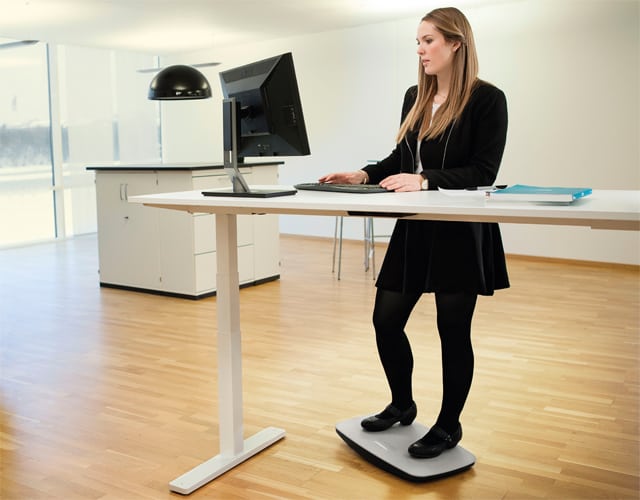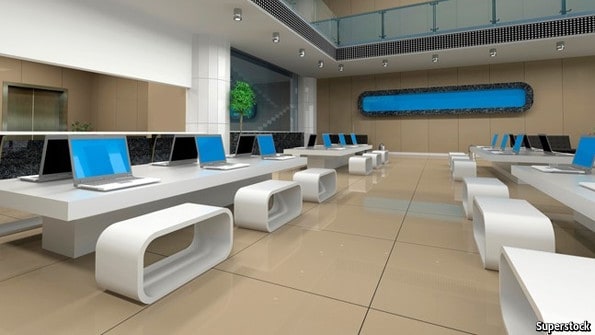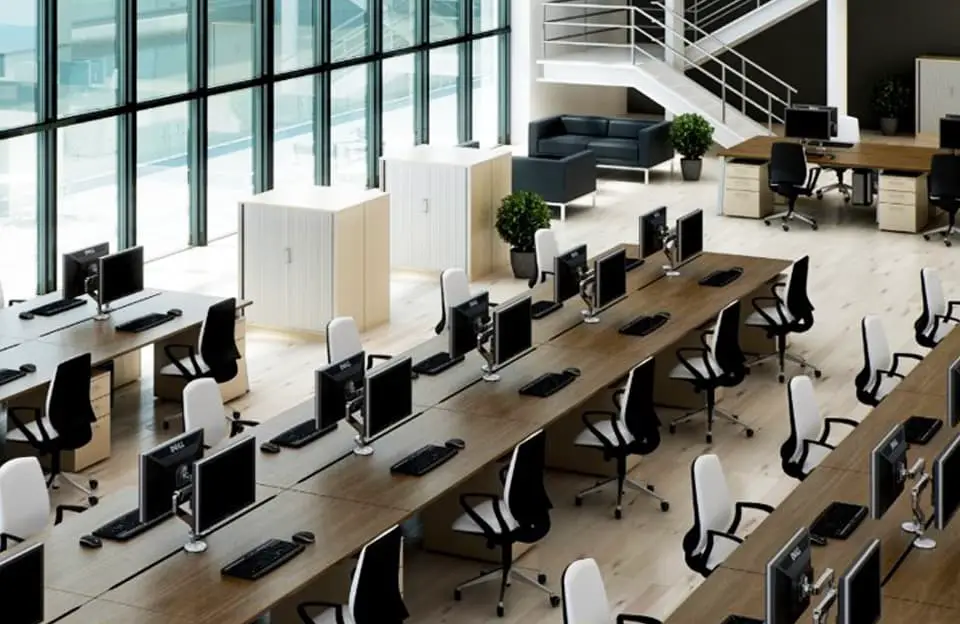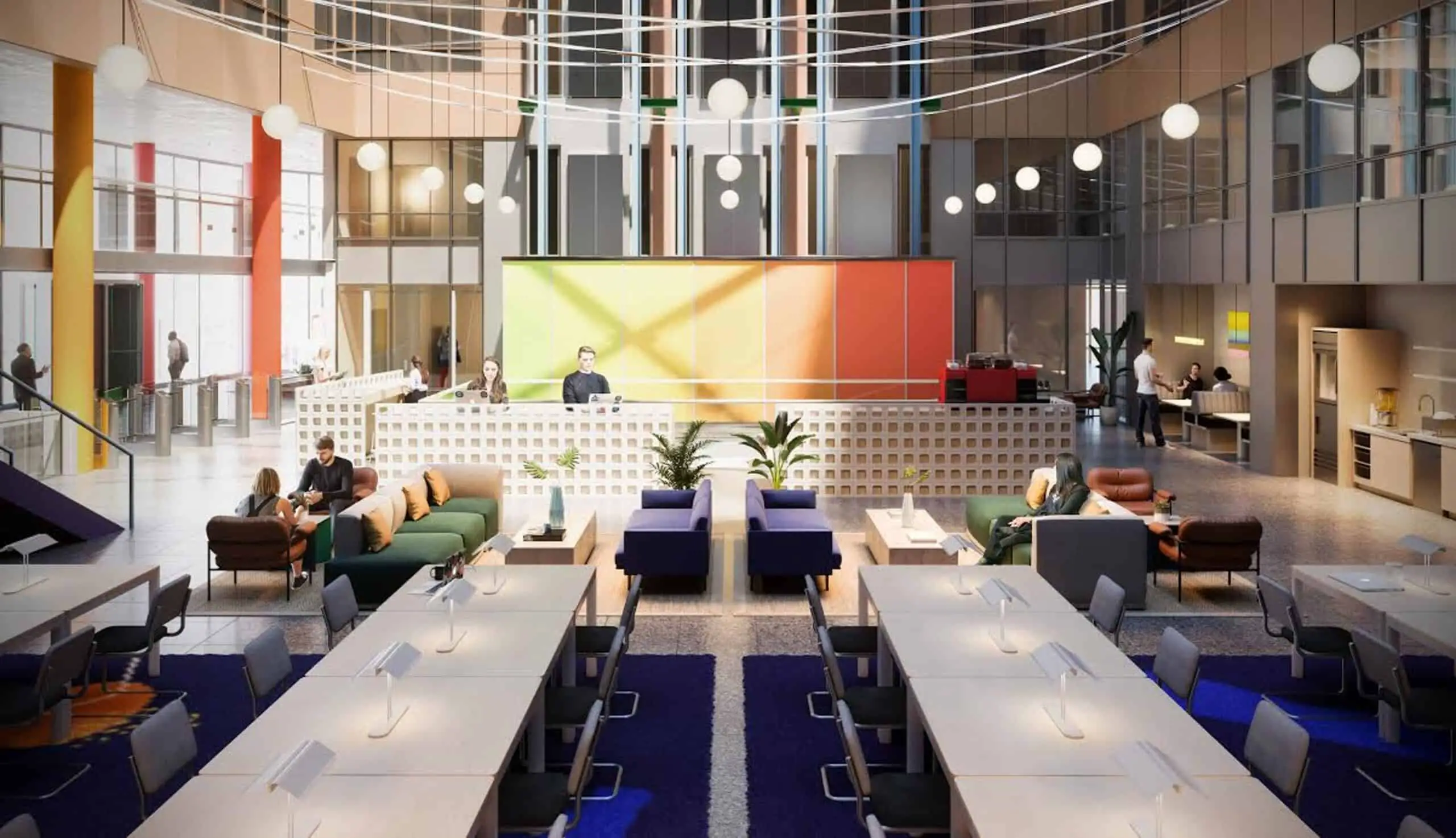More and more people work remotely, making the idea of having a stationed desk not that efficient. Since unassigned desks offer more diversity and flexibility, they have become very popular.
How to create an unassigned seating zone? By taking into an account the preferences of the employees, the unassigned seating zone should include an open floor with desks for collaborative work, bean bag chairs, think couches (soft seating), phone booths, private meeting or conference rooms, etc.
The concept of working in an open space office with unassigned seating was born as a result of the trend of working from home or remotely. This resulted in having more and more empty desks in the office even though every employee has their own assigned desk.
An unassigned desk is available to be used by anyone who needs that space, and this is an effective way of using the space in the office more efficiently. Employees have an increase in their productivity, thanks to the sense of freedom, options for more networking and collaboration between the employees, as well as using the latest technology made for flexible working.


Some of the employees really embrace the whole idea of unassigned seating, flexibility, and the personal locker for storing their belongings. On the other side, not having their own desk can be stressful for some people, so the whole process of getting used to, can take some time and usually needs some training.
The whole process of transforming your workplace takes time and strategic approach. It’s best when you are designing your unassigned seating zone to have an insight from your own employees about their working preferences. So you can implement them in your workplace and make the most out of your workplace.
Dos and Don’ts When Creating an Unassigned Seating Zone
Dos
- – Make sure that every desk and work surface has proper lighting and is free of monitor glares;
- – Make sure that every workstation is equipped with the appropriate technology, so your employees don’t have to run around the office to get their work devices up and running and at the same time waste their valuable time;
- – Once in a while, make changes in your sitting plan according to the needs of your employees;
- – Make sure that you leave enough space in your conference rooms so that the members of any team move around more freely to share their ideas;
- – Set rules for using the unassigned seats and shared meeting rooms;
- – Use an online program for making reservations for using the conference rooms;
- – Make sure to build proper soundproofing in the shared workplace;
- – Provide the needed training for getting used much faster to the new unassigned seating plan;
- – Provide cleaning supplies at each workstation;
- – Make sure every workstation is equipped with the required technology.
Don’ts
- – Make sure that you don’t separate the workstations with cubicle walls because adding wall barriers can decrease the teamwork;
- – Make sure that you don’t set all working stations and desks facing in the same direction, with even space between them and in line. Otherwise, you will create a sense of formal workplace that doesn’t boost creativity and flexibility;
- – To prevent a lot of complaints, make sure that you don’t seat the employees under or next to air conditioners or heating vents;
- – Make sure that you don’t seat the employees near the bathrooms.
Ergonomics in the Unassigned Seating Zone

Being an employer, you need to implement the following elements in your unassigned seating plan:
- – Chairs with adjustable height and adjustable armrests (so that the feet are on the floor, and keyboard at the level of the elbows);
- – Desks with adjustable height (stand or sit desks
 );
);
- – Desks’ depth should be around 30” (in case the monitors are around 27” or bigger);
- – Anti-fatigue mats
 ;
;
- – Different types of keyboards – split, standard or mini;
- – Proper acoustics for minimizing the noise;
- – Areas with soft seating (bean bag chairs);
- – Docking stations and laptop risers;
- – Private rooms for phone calls, meetings, etc.
Pros and Cons of Having an Unassigned Seating Zone
Pros
Reducing the unused workspace in the office. If there is a significant number of unused desks in the office, that means that space is not utilized efficiently. This wasted space can be better used by converting it into conference rooms, space for project development, space for relaxing, etc.
Increases the socialization and collaboration of the employees. Since there is no permanent seating, employees will be working in different working areas each day. This will allow them to interact more with employees from various departments, and share ideas and thoughts on different topics. The increased socialization will enable free flow of information, creating better cohesion and unique company culture.
Selecting a workstation that meets the tasks for the day. Hot desking or unassigned seating desks are allowing the employees to choose the workstation they need for their functions on that day. Employees can move freely around the office space and choose a meeting room for their conference calls for the day, team table with software for presentation for brainstorming with the team, or just a quiet workstation for thinking. This flexibility helps the employees to be more independent and mobile, which can increase the level of their happiness and their productivity.
Cons
People can’t personalize their desks. People can’t carry their potted plants, different types of trinkets or family photos with them all the time and put them on the desk for the day. The lack of personal stuff can increase the level of stress because having no designated desk can make them feel lost as well as underappreciated.
By creating a workplace that feels like home, giving them designated lockers, where they can keep their personal stuff and making the employees relaxed and comfortable in the office, they will have a sense of belonging to the company.
The desks should have proper storage space so the employees can put their office equipment and files in there while working on a particular workstation without making a mess on the desk.
Looking for a desk for the day can be overwhelming. Some of the employees don’t feel comfortable working in a flexible environment. If they somehow are late to work due to a doctor’s appointment or traffic, they will start worrying if they will have a desk for the day. Also, spending more than half an hour in looking where to sit, can shake the whole work routine of the employees, which is not efficient.
working in a flexible environment. If they somehow are late to work due to a doctor’s appointment or traffic, they will start worrying if they will have a desk for the day. Also, spending more than half an hour in looking where to sit, can shake the whole work routine of the employees, which is not efficient.
Technology. The most critical part of designing an unassigned seating zone is installing the right up-to-date technology. People should be able to connect their mobile devices on every workstation without having a problem. Otherwise, everyone’s day starts with stress.
A not clear policy on hygiene. Not implementing a strict policy on keeping the desks clear can cause massive discontent amongst employees. Providing antibacterial wipes on every desk and hand sanitizers on multiple locations around the office can prevent passing on the germs from one employee to another. Implementing rules such as not eating on the desk or clearing the desk, if it’s empty for more than hour, so it can be used by others.
Not having the proper ergonomic furniture in the office. Since the employees will be using different chairs and desks all the time, the company should provide fully adjustable furniture, that the employees can adjust it according to their ergonomic needs. Ergonomics are essential, and not having office chairs with adjustable arms, lumbar support and height, the employees will be against using different desk every day. The number of people with back pain problems will increase.
Also, to avoid eye-straining, the computer screens should be adjustable so the employees can bring their screen according to their eye level.
Related Questions
Should there be different types of seating areas in the office? While creating an unassigned seating zone, the employes must be aware that one size of desks or workstations doesn’t fit the different needs of the employees. Giving a vast selection of choices to the employees is what makes this concept to work.
Employees should be able to choose the desk that best suit the tasks for the day. For example, if someone stops in for a quick meeting or a chat, or go through their emails, they can use the breakout zones such as quiet zones, meeting rooms or even the kitchen for short periods of time. Accordingly, the furniture should be well fitted for different types of working styles and needs.
Should be there a scheduling tool for unassigned seating management? The whole process of transitioning to an unassigned seating zone, can go smoothly by installing the right technology, especially tools for scheduling and booking meeting rooms, conference rooms, etc. in large offices, having a software for reserving offices is crucial, because otherwise a lot of problems may occur with one space being reserved by several people. Also, you should provide proper training for using the tolls and make sure that the employees are comfortable with using it. You should do research before acquiring the best software for booking.


 );
); ;
;
 working in a flexible environment. If they somehow are late to work due to a doctor’s appointment or traffic, they will start worrying if they will have a desk for the day. Also, spending more than half an hour in looking where to sit, can shake the whole work routine of the employees, which is not efficient.
working in a flexible environment. If they somehow are late to work due to a doctor’s appointment or traffic, they will start worrying if they will have a desk for the day. Also, spending more than half an hour in looking where to sit, can shake the whole work routine of the employees, which is not efficient. 

